The Coelacanth: A Living Fossil of the Deep Seas
Meet the Coelacanth, a Living Fossil Fish. Coelacanths are ancient fish that have been around for over 400 million years. They were once thought to be extinct until a living coelacanth was discovered off the coast of South Africa in 1938. Today, there are two known species of coelacanth: the Indonesian coelacanth (Latimeria menadoensis) and the African coelacanth (Latimeria chalumnae).
Coelacanths are considered living fossils because they have remained relatively unchanged for millions of years. They have unique characteristics that set them apart from other fish species. For example, coelacanths have fleshy, lobed fins that resemble the limbs of tetrapods, which are animals with four limbs like amphibians, reptiles, birds, and mammals.
Coelacanths are found in deep marine waters and have also been found in freshwater habitats. They can grow up to six feet long and weigh up to 200 pounds. Their bodies are covered in thick scales that provide protection against predators.
The coelacanth’s name comes from two Greek words: “koilos,” meaning hollow or cavity, and “akantha,” meaning spine or thorn. This refers to the hollow spines on their fins.
Coelacanths have a slow reproductive rate and give birth to live young instead of laying eggs like most fish species. They also have a unique way of swimming by using their lobed fins to move through the water rather than relying on their tail fin like most fish.
Scientists continue to study coelacanths to learn more about their biology and evolutionary history. The discovery of living coelacanths has provided valuable insights into how these ancient fish evolved over time.
Physical Characteristics: Unique Features of the Coelacanth
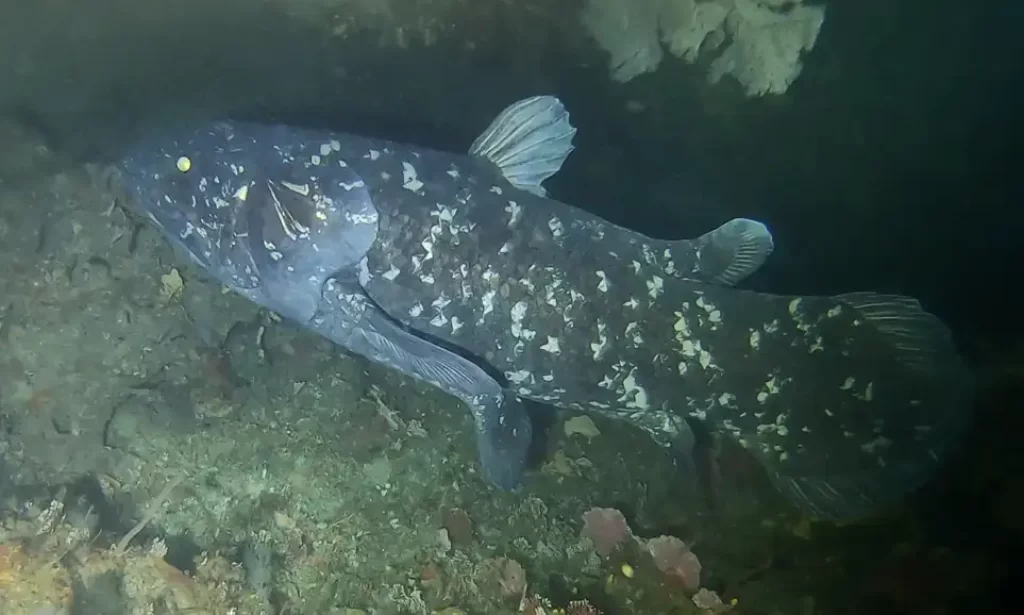
Lobed Fins: The Unique Feature of Coelacanth
One of the most interesting features of coelacanth species is their lobed fins, which are similar to limbs and are used for movement and stability. These fins are made up of a series of bones, muscles, and joints that allow for a range of motion not seen in other fish species. Unlike the fins found on most fish, which are supported by rays or spines, coelacanth fins have a central bone structure that runs down the length of each fin.
The lobed fins also contain muscles that allow for precise control over movement and direction. This unique feature has led some scientists to speculate that coelacanths may be more closely related to land animals than other fish species. The paired fins on coelacanths are shaped like fins but contain bones and joints, further distinguishing them from other fish.
Size Variability: Another Notable Characteristic of Coelacanth
Coelacanths can vary greatly in size, with some individuals reaching up to six feet in length. This size variability makes it difficult to identify individual specimens based solely on size. However, there are some physical characteristics that can help distinguish one coelacanth from another.
For example, older specimens tend to have more developed lobed fins than younger ones. Males tend to have larger dorsal (back) fins than females. These subtle differences may seem insignificant but can be crucial when studying these rare creatures.
Rostral Organ: An Important Component in Coelacanth Anatomy
Another notable feature of coelacanths is their vertebral column, which contains a fatty organ known as the rostral organ. This organ is believed to play a role in buoyancy control by regulating gas exchange between the bloodstream and swim bladder.
The rostral organ is unique to coelacanths and has been studied extensively by scientists looking to better understand the biology of these creatures. By examining the rostral organ, researchers hope to gain insight into how coelacanths are able to survive in their deep-sea habitat.
Habitat: Where to Find Coelacanths
Deep-sea environments are home to some of the most fascinating creatures on earth, and coelacanths are no exception. These ancient fish have been around for over 400 million years, but they were thought to be extinct until a chance discovery in the early 20th century. Today, we know that coelacanths can be found in specific areas of the ocean, and their habitat requirements are still not well understood.
Depth Range: 500-800 Meters
Coelacanths prefer deep-sea environments, typically at depths of 500 to 800 meters. This means that they are rarely seen by humans and have only been observed alive a handful of times. The specific reasons why they prefer these depths are still unknown, but it is believed that the pressure and temperature conditions at this depth range may play a role.
Location: Western Indian Ocean
The majority of known coelacanth populations are found in the western Indian Ocean, specifically off the coasts of South Africa, Mozambique, Tanzania, and Comoros. These areas provide suitable habitats for coelacanths with rocky underwater caves and crevices where they can hide from predators and hunt prey. Unfortunately, due to their limited range and low reproductive rates, coelacanth populations in these areas are considered endangered.
New Discoveries: Indonesia and Philippines
In recent years, coelacanths have also been discovered in the waters off the coast of Indonesia and the Philippines. These discoveries indicate that there may be more widespread populations than previously thought. However, further research is needed to determine if these populations face similar threats as those in the western Indian Ocean.
Habitat Requirements: Rocky Underwater Caves and Crevices
While much about coelacanth habitat preferences remains unknown, researchers believe that they prefer rocky underwater caves and crevices. These areas provide shelter and hiding places for coelacanths, as well as potential hunting grounds for their prey. However, studying these environments is difficult due to the depth and darkness of the ocean floor.
Challenges for Researchers
Studying coelacanth populations is a challenging task for researchers due to their elusive nature and deep-sea habitat. Only a handful of live coelacanths have ever been observed, making it difficult to gather data on their behavior and biology. The limited range of known coelacanth populations means that any threats to their habitats or survival could have significant impacts on the species as a whole.
Discovery: The Fascinating Story of the Coelacanth’s Rediscovery
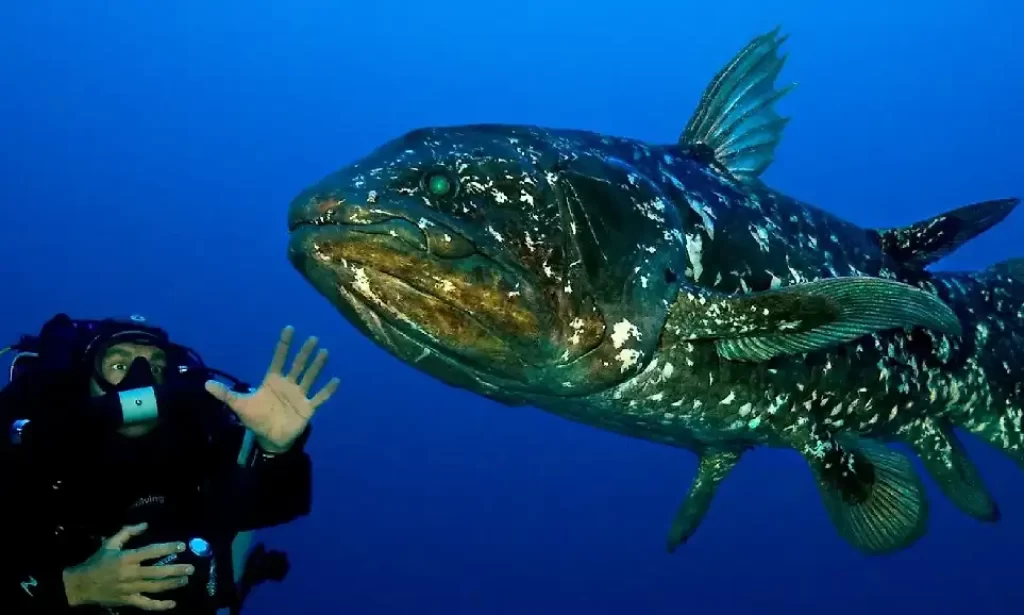
The Fascinating Story of the Coelacanth’s Rediscovery
Discovery can happen at any moment, in any place, and by anyone. In 1938, Marjorie Courtenay-Latimer discovered a mysterious fish that would change the course of natural history forever. The fish was later identified as a coelacanth, a prehistoric fish believed to have gone extinct 65 million years ago. This discovery opened up new horizons in natural history and sparked renewed interest in the study of the ocean and its wild world of animals.
The Discovery of the Coelacanth
Marjorie Courtenay-Latimer was a curator at East London Museum in South Africa when she received an unusual-looking fish from a local fisherman on December 22nd, 1938. She immediately recognized it as something special but couldn’t identify what species it belonged to. She sent pictures and descriptions to various ichthyologists around the world, including J.L.B Smith, who realized that this was no ordinary fish – it was a coelacanth.
Previously known only from fossils dating back millions of years ago, coelacanths were thought to be extinct until their rediscovery off the African coast in 1938. The discovery challenged scientific theories about animal crossing and shed light on how little we know about our oceans.
The Rediscovery of Coelacanth
Since its rediscovery, more specimens of coelacanth have been found in the western Indian Ocean, particularly around the Comoros Islands. In 1999, another species called Latimeria menadoensis was discovered off Sulawesi Island in Indonesia.
Coelacanths are often referred to as “living fossils” because they have remained relatively unchanged for over 400 million years. They are unique among fishes in having paired lobe fins that resemble limbs and contain bones similar to those found in human arms and legs.
The Significance of Coelacanth’s Rediscovery
The discovery of the coelacanth has become an iconic symbol of Africa’s rich biodiversity. It is a reminder that there are still many mysteries waiting to be uncovered in our oceans and that we must continue to explore and protect them.
Coelacanths have also played an important role in scientific research. They have been studied extensively for their unique adaptations, such as their ability to survive in deep waters with little oxygen, and their potential medicinal properties.
Significance in Science: How the Coelacanth is Changing Our Understanding of Evolution
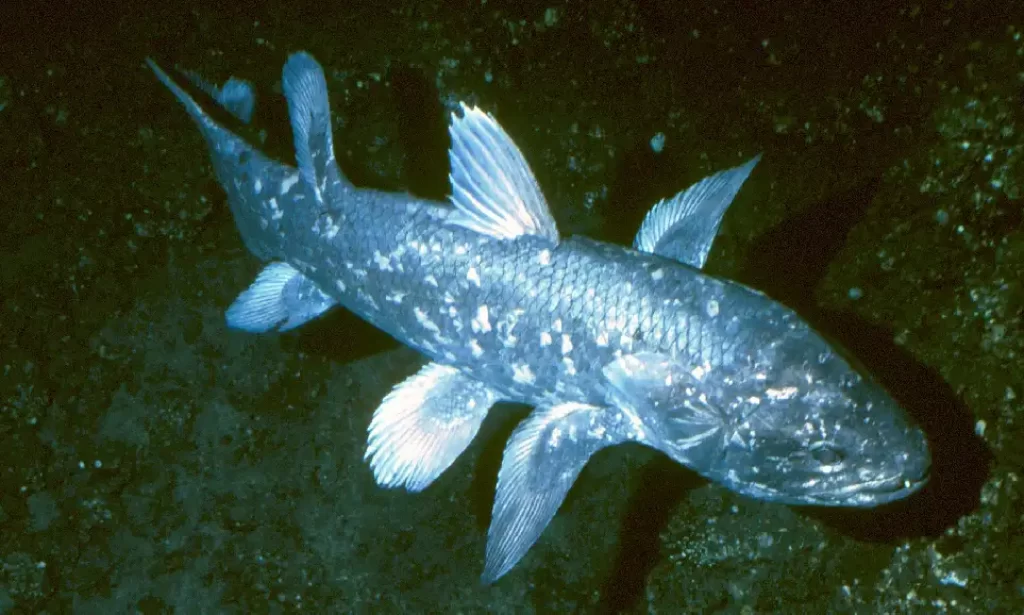
Unique Characteristics of Coelacanth
The coelacanth’s discovery in 1938 was a significant event in the scientific community, as it was thought to have gone extinct 66 million years ago. The coelacanth is an extraordinary fish that has remained virtually unchanged for millions of years. One of the most unique characteristics of the coelacanth is its lobed fins, which are different from the typical ray-finned fins found in most modern fish. These lobed fins are more closely related to the limbs of tetrapods than to the fins of other fish.
Another interesting feature of the coelacanth is its primitive lungs, which allow it to breathe air. This characteristic provides insight into how fish evolved into tetrapods and eventually gave rise to land-dwelling animals like reptiles, birds, and mammals. By studying these primitive lungs, scientists can learn more about how early tetrapods may have adapted to life on land.
Genetic Makeup and Evolutionary Significance
In addition to its unique physical characteristics, the coelacanth’s genetic makeup has also been found to be remarkably similar to early tetrapods. This similarity suggests that there may be a common ancestor between these groups. The study of coelacanths has provided valuable information about how evolution works and how species diverge over time.
One surprising finding from studying coelacanths is that they have a slow rate of evolution compared to other species. Traditional evolutionary theories suggest that species should change significantly over time due to natural selection and other factors. However, this slow rate of evolution challenges those theories and suggests that some species may not change much over long periods.
Importance in Science
The study of coelacanths has greatly expanded our understanding of evolution and the history of life on Earth. By examining their unique characteristics and genetic makeup, scientists can learn more about how different species are related and how they have changed over time. The study of coelacanths has shed light on the process of divergence, which is an important aspect of evolutionary theory.
Interesting Facts: Fun and Surprising Trivia About Coelacanths
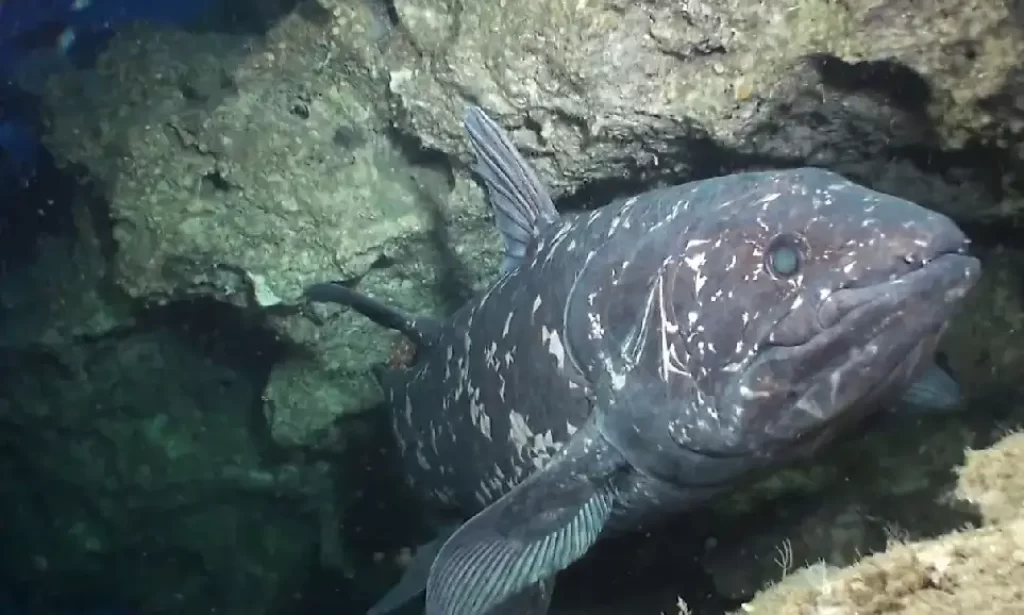
360 Million-Year-Old Fish: Coelacanth
Living fossils are rare, but coelacanths are one of the few species that fit this description. These fish have been around for over 360 million years and are considered to be one of the oldest living creatures on Earth. Here are some interesting facts about these ancient fish.
Coelacanths Were Thought to Be Extinct
For a long time, scientists believed that coelacanths went extinct around 66 million years ago during the Cretaceous-Paleogene extinction event. That was until a South African museum curator named Marjorie Courtenay-Latimer discovered a living coelacanth in 1938. The discovery caused quite a stir in the scientific community as it challenged their assumptions about the evolution of life on Earth.
Unique Features of Coelacanths
Coelacanths have several unique features that make them stand out from other fish species. One such feature is their hinged skull, which allows them to consume larger prey than other fish. Their lobed fins also resemble the limbs of early land animals, leading scientists to believe that they may have played a significant role in the evolution of terrestrial vertebrates.
Deep-Sea Dwellers
Coelacanths are deep-sea dwellers and can be found at depths of up to 2,300 feet. They prefer rocky areas with caves and crevices where they can hide from predators and ambush prey. Due to their habitat, little is known about their behavior or social structure.
Live Young Birth
Unlike most fish species, which lay eggs, coelacanths give birth to live young. Females carry their embryos for up to two years before giving birth to fully formed offspring measuring around 15 inches long.
Longevity: The Secret to the Coelacanth’s Remarkable Lifespan
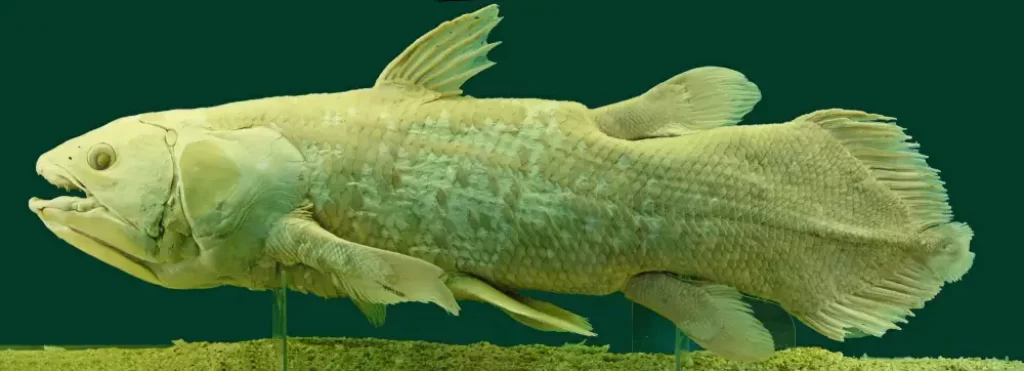
Slow Growth and Long Life: The Secret to the Coelacanth’s Remarkable Lifespan
Remarkably, the coelacanth has a lifespan of over 60 years. This longevity is due in part to their slow growth rate, as it takes many years for them to reach their full length. Unlike most fish, coelacanths grow very slowly, which contributes to their long lifespan.
Coelacanth embryos also have a longer development time than most fish. They are nourished by the yolk sac for up to a year before hatching. This extended development period may contribute to their longevity by allowing them more time to develop and mature before entering into the competitive world of adult coelacanths.
The population of coelacanths is relatively small, with only a few hundred individuals known to exist. This scarcity may be another factor contributing to their long lifespan. With fewer individuals competing for resources like food and shelter, each individual has a better chance of surviving and thriving.
High Fat Content: A Key Factor in Survival
Another fascinating aspect of the coelacanth’s survival strategy is its high fat content. Coelacanths are known for having an unusually high percentage of body fat compared to other fish species. This high-fat content may help them survive for extended periods without food or in harsh conditions where food is scarce.
Studies have shown that when faced with starvation or other stressful conditions, coelacanths can rely on their stored body fat as an energy source. In fact, some researchers believe that this ability to store large amounts of body fat played a crucial role in helping coelacanths survive through past extinction events.
A Living Fossil: An Ancient Species with Enduring Adaptations
The coelacanth is often referred to as a “living fossil” because it has remained virtually unchanged for millions of years. These ancient creatures first appeared in the fossil record around 400 million years ago and have persisted through multiple extinction events, including the one that wiped out the dinosaurs.
Despite their ancient origins, coelacanths have adapted to their environment in remarkable ways. Their slow growth rate, extended embryonic development, and high-fat content are just a few examples of how they have evolved to survive in their unique deep-sea habitat.
Threats to Survival: Challenges Facing Coelacanths Today
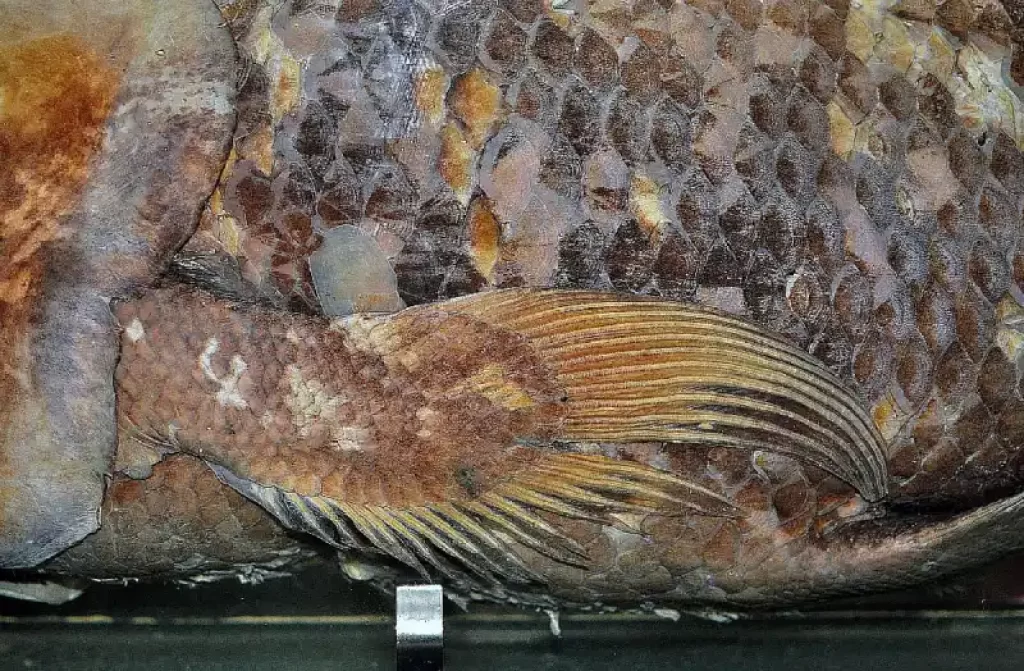
Changes in Prey Availability and Distribution
Coelacanths are ancient fish that have been around for over 400 million years. They were once thought to be extinct until a living specimen was discovered off the coast of South Africa in 1938. Since then, coelacanths have been found in other parts of the Indian Ocean, including off the coast of Indonesia and Tanzania.
One of the challenges facing coelacanths today is changes in their prey availability and distribution. Coelacanths feed on a variety of small fish, squid, and crustaceans. However, overfishing has led to declines in some of these prey species. Climate change is affecting ocean temperatures and currents, which can impact where prey species are found.
Fishing Practices
The current fishing practices in the Indian Ocean pose a significant threat to the survival of coelacanth populations. Coelacanths are caught as bycatch in nets used by commercial fishermen targeting other species such as tuna and swordfish. Male coelacanths are particularly vulnerable to being caught as they tend to stay closer to the surface than females.
While there are regulations in place to protect coelacanth populations from fishing activities, enforcement can be difficult due to limited resources and illegal fishing practices.
Habitat Destruction and Pollution
Another threat facing coelacanth populations is habitat destruction and pollution. Coelacanths live at depths between 100-500 meters below sea level near rocky outcrops or underwater caves. These habitats can be impacted by human activities such as deep-sea mining or oil exploration.
Pollution from human activities such as oil spills or plastic waste can also impact coelacanth populations indirectly by reducing water quality or contaminating their food sources.
Illegal Fishing and Poaching
Despite being protected by law in many countries, illegal fishing and poaching continue to be major challenges facing coelacanth populations. Coelacanths are highly valued by collectors and can fetch high prices on the black market.
There is a lack of awareness among local communities about the importance of protecting coelacanths. This can lead to accidental catches or intentional poaching for food or traditional medicine.
Conservation Efforts: What is Being Done to Protect Coelacanths
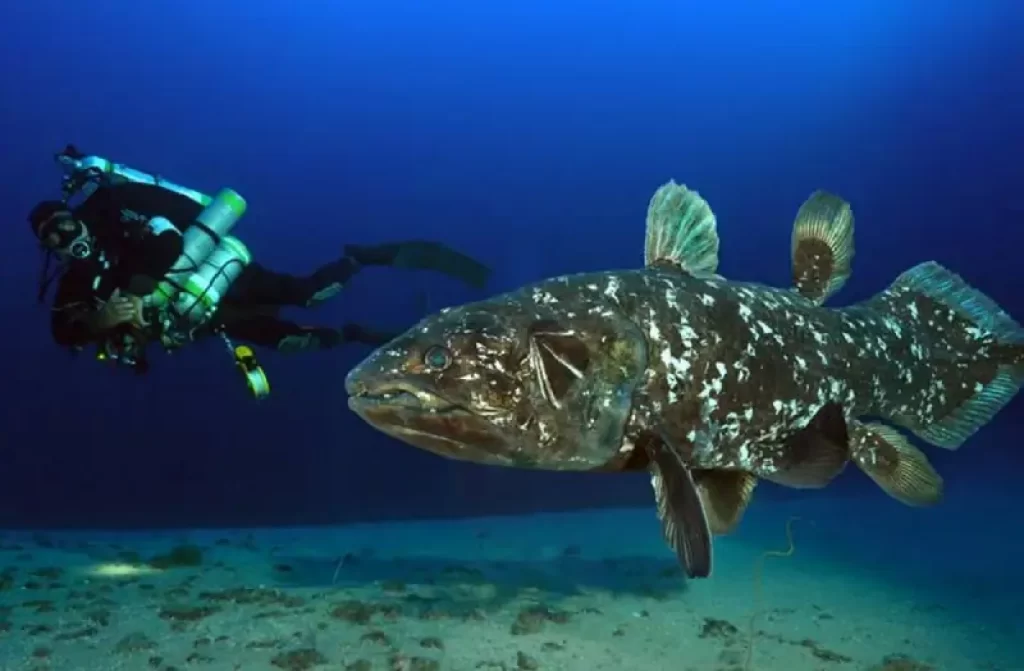
Establishing Protected Marine Areas
Coelacanths are considered a critically endangered species due to their low population and limited distribution in the wild. As a result, conservation efforts for coelacanths have become increasingly important in recent years. One of the most effective ways to protect these ancient fish is by establishing protected marine areas where fishing and other activities that could harm them are prohibited.
In South Africa, for example, the Sodwana Bay National Park has been designated as a protected area for coelacanths since 2000. The park covers an area of more than 220 square miles and includes both land and sea. Fishing is strictly prohibited within the park’s boundaries, which helps to ensure that coelacanth populations remain stable.
Regulating Fishing Practices
Another key component of coelacanth conservation is regulating fishing practices in areas where they are known to live. Coelacanths were once caught accidentally by fishermen who were targeting other species, but now regulations have been put in place to prevent this from happening.
For example, in Indonesia, regulations require fishermen to use specific types of nets that do not harm coelacanths or their habitats. There are strict limits on how many fish can be caught each year, which helps to prevent overfishing and ensures that populations remain healthy.
Monitoring Populations through Scientific Research
Scientific research plays an essential role in monitoring coelacanth populations and understanding their behavior and habitat requirements. Researchers use a variety of techniques to study these ancient fish, including tagging individuals with electronic devices that allow them to track movements over time.
One such study was conducted off the coast of Tanzania, where researchers used underwater cameras to observe coelacanths living at depths of up to 800 feet below the surface. They found that these fish spend most of their time near rocky outcroppings on the seafloor and tend to stay in one place for long periods, likely due to their slow metabolism.
The Importance of Coelacanth Conservation
Coelacanth conservation is important not only for preserving this unique and ancient species but also for maintaining the health and diversity of marine ecosystems. These fish play a significant role in their respective food webs, and losing them could have far-reaching consequences.
Furthermore, coelacanths are an excellent example of how conservation efforts can help to protect endangered species. With the right combination of protected areas, fishing regulations, and scientific research, it is possible to ensure that these fascinating creatures continue to thrive for generations to come.
Why the Coelacanth Continues to Captivate Scientists and Nature Enthusiasts Alike
Throughout history, the coelacanth has been a fascinating creature that has captivated scientists and nature enthusiasts alike. With its unique physical characteristics, mysterious habitat, and remarkable longevity, this ancient fish continues to challenge our understanding of evolution and the natural world.
The coelacanth’s rediscovery in 1938 was a watershed moment in scientific history. For decades, experts believed this species had gone extinct millions of years ago. Its survival raises important questions about how life adapts to changing environments over time.
Despite its enigmatic nature, we have learned much about the coelacanth since its rediscovery. We now know that these creatures can live for up to 100 years and grow up to six feet long. They inhabit deep-sea caves off the coast of Africa and Indonesia, where they feed on smaller fish and crustaceans.
The significance of the coelacanth goes far beyond its unique features or habitat. It is also changing our understanding of evolution itself. By studying this ancient fish’s genetic makeup, scientists are learning more about how species evolve over time and adapt to changes in their environment.
Unfortunately, like many endangered species today, the coelacanth faces significant threats to its survival. Climate change, pollution, and overfishing are all major challenges that must be addressed if we hope to preserve this remarkable creature for future generations.
Despite these challenges, conservation efforts are underway around the world to protect the coelacanth from extinction. From marine reserves in Madagascar to research facilities in South Africa, experts are working tirelessly to understand this creature better and ensure its continued survival.







